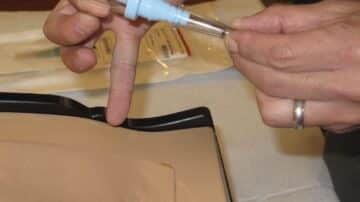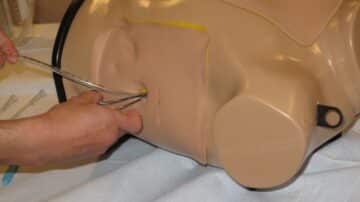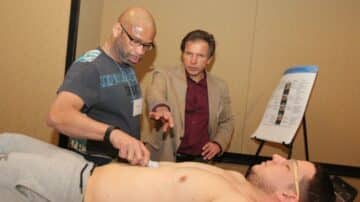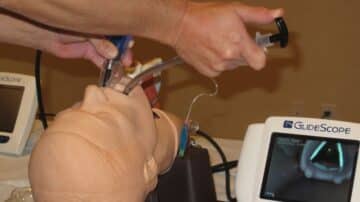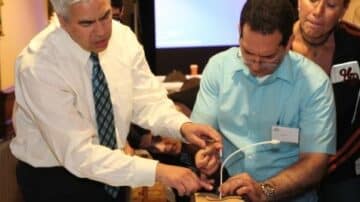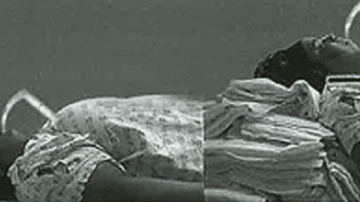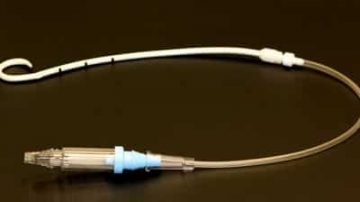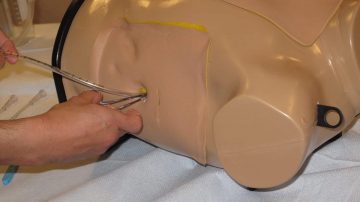The insertion of chest tubes or tube thoracostomy is an effective way to drain blood, air, pus, and other fluids from the thorax to address pleural effusion. It is part of postoperative care for cardiothoracic surgeries which involve the lungs,…
Read MoreChest drainage is an ancient medical procedure that’s been used to treat infections, effusions, pneumothorax, and thoracic trauma. In the modern medical world, chest tubes are a ubiquitous tool for managing pneumothorax, pleural air leaks, traumatic hemothorax, infected pleural effusions,…
Read MoreMore Articles – Chest Tube, Emergency Procedures, FAST Exam, Featured, King Tube, Medical General, RUSH Exam
Injury causes over 150,000 deaths per year in the U.S. and over 5 million worldwide. Around 80% of these traumatic injuries are blunt, with incidences of fatality secondary to hypovolemic shock and intraperitoneal bleeds. Fatalities can be prevented if professionals…
Read MoreConditions like congestive heart failure, pneumonia, cancer, and lupus can cause excess fluid to accumulate in the pleural space or area between the lungs and chest wall. To aspirate fluid from a pleural effusion, a medical procedure known as thoracentesis…
Read MoreVideolaryngoscopy has quickly become a popular method for airway management because it provides better visuals of the glottis. Failed intubations have decreased since more clinicians have begun to rely on videolaryngoscopy and the greater visibility it provides. Awake videolaryngoscopy is…
Read MoreTraditionally, traumatic hemothorax treatment called for the insertion of a 36-French (36F) to 40F large-bore chest tube (CT). In this article, we’ll delve into a study that shows how 14F percutaneous catheters (P-CATs or PCs) or pigtail catheters have equal…
Read MoreMore Articles – Cardiovascular diseases, Chest Tube, Emergency Procedures, Events, Featured, King Tube, Medical General, medical procedures
Thoracostomy or the insertion of chest tubes (CTs) is a frequent procedure in clinical practices. After inserting chest tubes in the patient’s pleural cavity, they become a route for administering antibiotics, sclerosing agents, fibrinolytics, and saline. Meanwhile, indwelling pleural catheters…
Read MoreWhat is conscious sedation? Conscious sedation, also known as procedural sedation, is a common practice in emergency departments for patients undergoing painful or anxiety-provoking procedures. It is intended as a less invasive method. Generally, those who undergo this type of…
Read MoreMore Articles – Arterial line, Cardiovascular diseases, Central line, Chest Tube, Emergency Procedures, Endotracheal Intubation, Events, FAST Exam, Intraosseous line, King Tube, Laryngeal Mask Airway, Lumbar Puncture, Mechanical Ventilation, Medical General, medical procedures, Needle Decompression, Paracentesis, Procedural Sedation, RUSH Exam, Thoracentesis, Ultrasound-Guided Peripheral IV
Physicians, physician associates (PAs), and nurse practitioners (NPs) need to be adept in a range of essential medical emergency procedures that they must perform in an inpatient settings. These bedside procedures are accomplished readily, but only if you have the…
Read MoreA Continuing Medical Education (CME) Course is designed for doctors, nurses, nurse practitioners, physician associates and other healthcare professionals who want to learn more about certain topics in medicine. The primary goal of CME is to improve the quality of…
Read MoreThe emergency room (ER) is an essential area of any hospital because it often deals with life-and-death situations. How medical personnel respond significantly affects the prognosis of patients who are in need of urgent care. As a medical professional, experience…
Read MoreMorbidly obese patients can pose numerous challenges when it comes to airway management. Morbid obesity can make vascular access more difficult and you need good vascular access prior to any attempts at safe airway management. In addition, morbid obesity can…
Read MoreA patient with a hemodynamically stable spontaneous pneumothorax can be managed as an outpatient using the placement of a small-bore pigtail catheter attached to a Heimlich valve. As the Director of Medicine at a teaching hospital, I frequently encounter…
Read MoreChest tubes, or thoracostomy tubes, have been used since the fifth century BC when Hippocrates described the use of a hollow tin tube to drain fluid that was likely an empyema from his description.[i] Chest tubes started to be used…
Read MoreThis blog summarizes recommended management of chest tube drainage of the pleural space. The blog will cover the recommended size of chest tube for different indications, suggestions for chest tube insertion technique, methods to avoid chest tube complications and when…
Read MoreCategories
- ACLS (1)
- Arterial line (33)
- Cardiovascular diseases (77)
- Central line (55)
- Chest Tube (39)
- Dermatology (4)
- Emergency Procedures (138)
- Endocrinology (6)
- Endotracheal Intubation (36)
- Events (24)
- FAST Exam (12)
- Featured (112)
- Featured Procedure (42)
- Gastrointestinal diseases (32)
- Ginecology (3)
- Glidescope Intubation (21)
- Hematology (33)
- Hospital Procedures (85)
- Infections (32)
- Intraosseous line (8)
- King Tube (27)
- Laryngeal Mask Airway (18)
- Lumbar Puncture (36)
- Mechanical Ventilation (34)
- Medical General (95)
- medical procedures (258)
- Needle Decompression (6)
- Nephrology (11)
- Neurological diseases (12)
- Oncology (4)
- Paracentesis (32)
- Pericardiocentesis (3)
- Procedural Sedation (19)
- Respiratory diseases (85)
- RUSH Exam (8)
- Thoracentesis (37)
- Traumatology (24)
- Travel (27)
- Ultrasound-Guided Peripheral IV (13)

